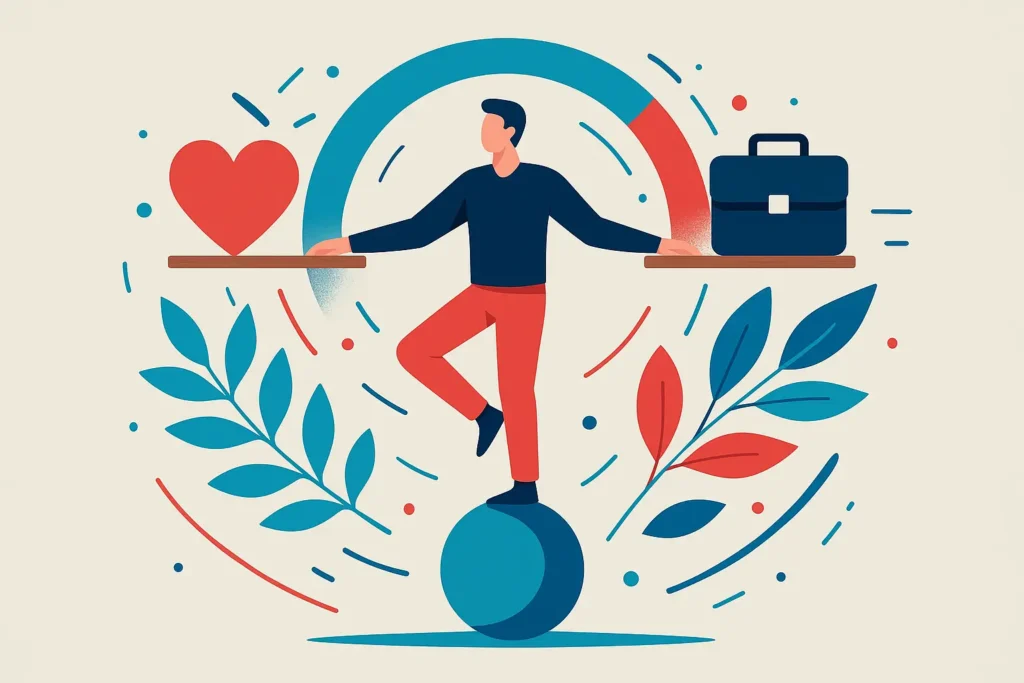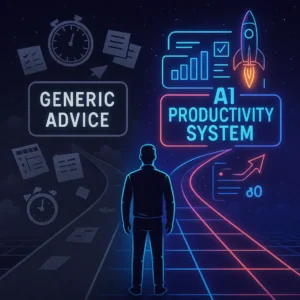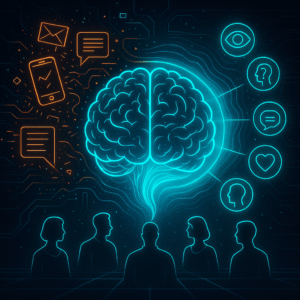“You don’t find balance. You create balance.” – Bert Jacobs, Co-founder of Life is Good.
Imagine achieving extraordinary success in your career, only to feel an unexpected emptiness inside. This was my reality as a young entrepreneur who eventually sold a company for $321 million. I had climbed the mountain I’d set out to conquer, but the view from the top revealed a surprising truth: true fulfillment requires more than just professional achievement.
This journey taught me a crucial lesson about balance in life. While career success provided financial freedom and professional satisfaction, it couldn’t fill the void created by neglected relationships, deteriorating physical health, and emotional exhaustion.
The struggle for balance isn’t unique to entrepreneurs. According to recent research by the American Psychological Association, 76% of Americans report feeling overwhelmed by their responsibilities, with 68% experiencing what researchers call “balance debt” – a deficit in one or more critical life areas that creates cascading negative effects across all aspects of well-being.
But what if there was a systematic approach to finding balance in life – one that didn’t require superhuman willpower or drastic lifestyle changes?
The answer, I discovered through years of research and personal experimentation, lies in understanding and nurturing what I call the 5 Cores of Life: Mindset, Career and Finances, Relationships, Physical Health, and Emotional Health.
By focusing on these interconnected areas, you can create a harmonious existence where every aspect of your life thrives – and, surprisingly, this balance can even accelerate your professional success through increased energy, creativity, and resilience.
Upgrades You’ll Earn from This Guide:
- A practical framework for understanding the 5 essential areas that contribute to living a balanced life
- Actionable, science-backed strategies for how to find balance in life without overwhelm
- A personalized approach to maintaining continuous growth and fulfillment across all life domains
- An AI-powered method to identify your unique balance challenges and create customized solutions
What Does It Mean to Have Balance in Life?
Finding balance in life isn’t about perfectly dividing your time and energy in equal portions across different activities. Rather, it’s about creating a state of harmony where all important aspects of your life receive appropriate attention according to your values and current circumstances.
The balance of life is dynamic, not static. Some seasons may require more focus on career, while others call for prioritizing relationships or health. True balance comes from conscious awareness of which areas need attention and intentional effort to prevent any single domain from being chronically neglected.
When you’re in balance, you experience:
- Mental clarity and focused attention
- Emotional stability even during challenges
- Physical energy and resilience
- Meaningful connections with others
- A sense of purpose and direction
The 5 Pillars of a Balanced Life
1. Mindset Core

Your mindset is the foundation upon which all other aspects of balance in life are built. It determines how you interpret challenges, respond to setbacks, and approach growth opportunities.
A balanced mindset is growth-oriented rather than fixed, viewing obstacles as temporary and solvable rather than permanent and defining. This perspective creates resilience that supports all other life areas.
Stanford psychologist Carol Dweck’s research demonstrates that people with growth mindsets achieve more, learn more effectively, and recover from setbacks faster than those with fixed mindsets. When you believe your abilities can improve through effort, you’re more likely to persist through the inevitable challenges of creating balance.
The mindset pillar includes:
- Positive self-talk and belief systems
- Perspective and attitude toward challenges
- Learning orientation and curiosity
- Gratitude and appreciation practices
- Vision and purpose clarity
Read More: Fun Gratitude Activities for Adults
2. Career and Finances Core

Finding balance in your career means aligning your work with your values, strengths, and passions while creating sustainable financial stability. Rather than chasing success at all costs, a balanced approach to career and finances prioritizes meaningful contribution and security without sacrificing other life domains.
According to a longitudinal study by Harvard Business Review, professionals who prioritize work-life balance were 21% more productive and reported 68% higher job satisfaction than their counterparts who focused exclusively on career advancement.
This core includes:
- Work that leverages your strengths and interests
- Financial literacy and management skills
- Career development and growth
- Time management and boundary setting
- Income generation aligned with your values
3. Relationships Core

The quality of your connections with others profoundly impacts your happiness and resilience. Nearly every major study on happiness and longevity identifies strong relationships as a critical factor in well-being.
Harvard’s 80-year Study of Adult Development—one of the longest-running studies on happiness—found that the quality of relationships was the strongest predictor of both happiness and health. “Good relationships don’t just protect our bodies; they protect our brains,” explains Dr. Robert Waldinger, the study’s director.
A balanced relationship core includes:
- Deep, meaningful connections with family and friends
- Healthy boundaries and communication skills
- Community involvement and belonging
- The ability to give and receive emotional support
- Constructive conflict resolution skills
Read More: Healing from a Toxic Relationship
4. Physical Health Core

“Take care of your body. It’s the only place you have to live.” – Jim Rohn
Your physical health provides the energy and vitality needed to pursue balance in all other areas. When this core is neglected, everything else becomes more difficult as energy diminishes and focus fragments.
Physical balance includes:
- Regular movement and exercise
- Nutritious, energizing eating patterns
- Quality sleep and recovery
- Preventive health care and body awareness
- Physical environment optimization
Despite its importance, physical health is often the first casualty of busy schedules. The Centers for Disease Control and Prevention reports that only 23% of Americans get the recommended amount of exercise, reflecting how easily essential self-care can be overshadowed by other demands.
Read More: Stages of Burnout
5. Emotional & Mental Health Core

Your emotional and mental well-being determines how effectively you navigate life’s challenges. This core focuses on developing awareness of your feelings, managing stress, and creating psychological safety and resilience.
According to the World Health Organization, one in four people globally will be affected by mental or neurological disorders at some point in their lives. Yet emotional health often receives less attention than physical health despite its equal importance for overall well-being.
A balanced emotional health core includes:
- Stress management techniques
- Emotional awareness and regulation
- Time for reflection and processing
- Engagement in activities that bring joy
- Access to support resources when needed
When these five pillars of a balanced life are in harmony, you experience what psychologists call “eudaimonic well-being”—a state of functioning optimally across multiple life dimensions rather than simply feeling good momentarily. Whenever you feel out of balance, it often indicates neglect in one or more of these core areas.
Balance Through Effective Delegation: A Key to Success
Delegation stands as one of the most powerful tools for finding balance in life. When implemented thoughtfully, it does more than simply transfer tasks—it creates opportunities for growth, trust, and enhanced productivity across all life domains.
Restoring Balance: Breaking Free from Control Patterns
Effective delegation requires letting go of the desire to control every detail. This shift from micromanagement to strategic oversight allows for better resource allocation and improved outcomes across projects and relationships.
Research from the University of California shows that leaders who delegate effectively experience 33% lower stress levels and report greater work satisfaction than those who attempt to handle everything themselves.
Finding Balance in Professional Life
When you delegate effectively in your career:
- You create development opportunities for team members
- Your focus shifts to high-value strategic activities
- Team capability and resilience improve
- Innovation increases as diverse perspectives engage with challenges
- Your leadership impact expands beyond what you could accomplish alone
Balance and Harmony in Personal Life
Delegation in your personal domain might include:
- Sharing household responsibilities based on strengths and preferences
- Outsourcing tasks that drain your energy without adding value
- Teaching children age-appropriate responsibilities
- Leveraging technology for automation where appropriate
- Accepting help from your support network
The benefits extend beyond task completion. Delegation fosters trust and mutual respect, whether at home or work. When we delegate, we communicate confidence in others’ abilities, creating a positive cycle of increased motivation and commitment.
Read More: How to Find Yourself when you are Lost
9 Practical Strategies to Find Balance in Life
These nine strategies are designed to help you nurture and balance all five cores of life, creating a foundation for sustainable well-being and fulfillment.
1. Practice Daily Gratitude
“Gratitude turns what we have into enough.” – Anonymous
Regularly acknowledging the positive aspects of your life creates a mental environment conducive to balance. Research in positive psychology shows that practicing gratitude can significantly improve mental health, increase happiness, and reduce depression.
When you practice gratitude, it positively affects brain neurotransmitters such as dopamine and serotonin, leading to immediate feelings of well-being and creating a foundation for balanced thinking.
Tips to Practice Gratitude:
- Start each day by writing down three specific things you’re grateful for
- Look for unexpected blessings in challenging situations
- Express appreciation directly to people who have positively impacted you
- Create physical reminders of gratitude (photos, notes, objects) in your environment
Read More: 100 Things I am Grateful for
2. Prioritize Tasks For Better Work-Life Balance
“The key is not to prioritize what’s on your schedule, but to schedule your priorities.” – Stephen Covey
Not everything that demands attention is truly important. Learning to distinguish between urgency and importance is critical for managing work-life balance in your career.
Actionable Prioritization Tips:
- Use the Eisenhower Matrix to categorize tasks:
- Urgent & Important: Do immediately
- Important but Not Urgent: Schedule dedicated time
- Urgent but Not Important: Delegate when possible
- Neither Urgent nor Important: Eliminate or minimize
- Identify your top three priorities each morning before opening email or social media
- Schedule your most important work during your peak energy hours
- Review your prioritization system weekly to ensure alignment with your core values
3. Set Clear Boundaries
Boundaries are the invisible lines that protect your time, energy, and attention. Without them, other people’s priorities inevitably override your own, making balance in life impossible.
Research from the University of California found that people who set and maintain clear boundaries report 74% higher satisfaction with their work-life balance than those who don’t.
Tips for Setting Effective Boundaries:
- Define specific working hours and communicate them clearly
- Create technology boundaries (e.g., no phones during meals, no email after 8 PM)
- Practice saying “no” to requests that don’t align with your priorities
- Establish physical boundaries for different activities (dedicated workspace, relaxation area)
- Review and adjust your boundaries regularly as circumstances change
4. Schedule Regular Quality Time
Dedicated, undistracted time with loved ones strengthens your relationship core while providing emotional fulfillment that enhances all other areas. Quality time doesn’t require elaborate planning—simple, consistent connection moments often have the greatest impact.
Ideas for Meaningful Connection:
- Implement tech-free family dinners where everyone shares highlights from their day
- Schedule a weekly date night with your partner, alternating who plans the activity
- Create a monthly “adventure day” with children or friends
- Establish a regular video call ritual with distant loved ones
- Develop traditions that become meaningful touchpoints throughout the year
Read More: How to Stop Pretending to be Happy
5. Incorporate Exercise into Your Routine
Physical movement isn’t just about fitness—it’s a cornerstone of mental clarity, emotional regulation, and energy management. Regular exercise has been shown to improve cognitive function, reduce anxiety, enhance mood, and increase productivity.
Despite these benefits, finding time for exercise remains challenging. The key is integration rather than addition—weaving movement into your existing routines instead of trying to carve out large blocks of new time.
Practical Exercise Integration:
- Schedule “walking meetings” for appropriate work calls
- Try the “exercise snacking” approach: 5-10 minute movement breaks throughout the day
- Pair exercise with another activity you enjoy (audiobooks, podcasts, catching up with friends)
- Choose activities that serve multiple cores (social sports leagues, outdoor family activities)
- Start with a “two-minute rule”—commit to just two minutes of activity to overcome inertia
6. Practice Mindfulness
Mindfulness—the practice of present-moment awareness without judgment—creates a foundation for intentional living. When you’re fully present, you make better decisions about how to allocate your attention and energy across your five cores.
Research shows that regular mindfulness practice reduces stress hormone levels, improves attention, and enhances emotional regulation—all critical components of maintaining balance in life.
Simple Mindfulness Practices:
- Begin with just 2-5 minutes of focused breathing each morning
- Practice “single-tasking” during routine activities (eating, showering, walking)
- Implement mindful transitions between activities (three deep breaths before entering home)
- Use environmental cues (doorways, red lights) as reminders to check in with your present experience
- Try body scan meditations before sleep to release tension and improve rest quality
Read More: How to Clear you Mind with Meditation
7. Set Achievable Goals
Balanced goal-setting means challenging yourself without creating unsustainable pressure. When goals feel overwhelming, you’re more likely to abandon them entirely rather than adjust your approach.
Effective Goal-Setting Framework:
- Create specific goals for each of your five core areas to ensure holistic development
- Break larger goals into milestone markers with clear success criteria
- Establish both process goals (actions within your control) and outcome goals (results)
- Schedule regular review periods to assess progress and make necessary adjustments
- Celebrate progress at each milestone to reinforce positive momentum
8. Communicate Openly
Effective communication serves as the bridge between your internal experience and external relationships. Without it, misunderstandings multiply, needs go unmet, and tensions escalate—all undermining your balance of life.
Communication Enhancement Strategies:
- Practice expressing needs directly rather than expecting others to infer them
- Develop listening skills by asking clarifying questions before responding
- Schedule regular check-ins with key people in your life (family meetings, one-on-ones with team members)
- Learn to articulate emotions specifically (“I feel disappointed” rather than “I feel bad”)
- Create communication rituals that ensure important conversations happen consistently
9. Maintain a Balanced Diet
Nutrition affects everything from energy levels to mood stability to cognitive function. A balanced diet supports your physical core while providing the consistent energy needed to maintain balance across all domains.
Nutritional Balance Approaches:
- Focus on food quality rather than restriction or rigid rules
- Prepare meals in batches to ensure healthy options are available during busy periods
- Develop simple nutritional templates rather than complicated meal plans
- Stay well-hydrated throughout the day (keep water visible and accessible)
- Practice mindful eating to improve satisfaction and natural portion regulation
Personalize Your Balance Journey: AI-Powered Approach
While the strategies above provide a solid foundation for finding balance in life, true transformation comes from customization. Each person’s balance challenges are unique, influenced by their specific circumstances, strengths, preferences, and goals.
Artificial intelligence offers a powerful tool for creating a personalized roadmap to balance across your five core areas. The following AI prompt helps you identify your unique balance challenges and develop tailored habits that address your specific needs.
AI Prompt To Copy/Paste:
“I’m looking to create better balance across the important areas of life. Please act as a science-based life coach to help me identify my key balance challenges and develop personalized habits that will help me create sustainable harmony.
Please guide me through this process step by step, waiting for my response before moving to each next stage:
Step 1: Core Areas Assessment
Goal: Identify which life areas feel most out of balance and how they’re affecting other domains.
- Which of these five core areas feels most out of balance in your life right now: Mindset, Career/Finances, Relationships, Physical Health, or Emotional/Mental Health? a. Example: “My Physical Health core feels most neglected because I’ve been prioritizing work deadlines.”
- How is this imbalance affecting other areas of your life? a. Example: “My lack of exercise and poor sleep are affecting my emotional resilience and work focus.”
- What specific challenges or obstacles are preventing balance in this area? a. Example: “Long work hours leave me too tired to exercise, and I often work through lunch.”
Step 2: Balance Pattern Analysis
Goal: Recognize patterns and identify potential leverage points for improvement.
After I share my responses, please:
- Identify potential connections between different areas of imbalance
- Highlight any patterns in how I allocate time, energy, or attention
- Ask: “Does this analysis accurately reflect your experience?”
Step 3: Golden Habit Selection
Goal: Identify high-impact habits that address multiple balance challenges simultaneously.
Once I confirm your analysis, suggest three potential “golden habits” that could create positive ripple effects across multiple core areas. For example:
- Habit 1: A morning routine habit that sets a foundation for the day
- Habit 2: A boundary-setting habit that protects energy and attention
- Habit 3: A connection habit that enhances relationships while supporting other needs
Ask me to choose one or suggest my own related habit.
Step 4: Implementation Strategy Development
Goal: Create a personalized implementation plan using three key methods.
Based on my chosen golden habit, help me develop implementation strategies:
- Make it Obvious/Attractive:
- How can I design my environment to support this habit?
- What visible reminders or triggers would help me remember?
- Make it Easy:
- How can I reduce friction or obstacles to this habit?
- What’s the smallest possible version I could start with?
- Make it Fun/Rewarding:
- How could I make this habit more enjoyable?
- What meaningful rewards would reinforce my progress?
Step 5: Balance Monitoring System
Goal: Create an accountability approach that ensures ongoing awareness and adjustment.
Help me develop a simple system to:
- Track progress on my golden habit
- Monitor overall balance across my five core areas
- Make necessary adjustments when life circumstances change
Please provide a practical framework for reviewing and maintaining my balance journey.”
Example Conversation:
AI: “Which of these five core areas feels most out of balance in your life right now: Mindset, Career/Finances, Relationships, Physical Health, or Emotional/Mental Health?”
User: “My Career/Finances core is dominating everything else. I’m working 60+ hours weekly at my startup, and it’s leaving no room for relationships or self-care.”
AI: “How is this imbalance affecting other areas of your life?”
User: “I’ve stopped exercising completely, barely see friends, and feel constantly anxious. My partner is frustrated with my unavailability, and I’m starting to resent my own business despite loving the work itself.”
AI: “What specific challenges or obstacles are preventing balance in this area?”
User: “The main issues are poor boundaries around work hours, trying to do everything myself instead of delegating, and having no transition time between work and personal life since I work from home.”
AI: “Based on your responses, I’m seeing a clear pattern where work has expanded beyond sustainable boundaries, creating a cascade effect across your other cores. Your relationship, physical health, and emotional cores are all suffering from resource depletion.
I notice you mentioned three key leverage points that could create significant positive impact:
- Boundary setting around work hours
- Delegation opportunities
- Work-life transitions, especially important when working from home
The good news is that addressing even one of these areas could create positive ripple effects across multiple cores. Does this analysis accurately reflect your experience?”
By working through this AI-guided process, you’ll develop a personalized balance strategy tailored to your unique circumstances. This approach addresses root causes rather than symptoms, creating sustainable change that evolves with your life.
Summing Up: The Journey to Finding Balance in Life
Achieving a balanced life is an ongoing journey, not a destination. The practical strategies shared in this guide aren’t just theoretical concepts—they’re battle-tested approaches that have made a real difference in my life and the lives of many others I’ve worked with.
My path from struggling young entrepreneur to fulfilled individual taught me that true happiness comes from nurturing all aspects of life, not just career success.
The 5 Cores are interconnected. When we neglect one, it affects our overall well-being. However, by attending to each core area, we create a strong support system for ourselves, enhancing both our personal satisfaction and professional effectiveness.
Ready to Level Up Your Life? Take the Next Step Now!
You’ve learned strategies for how to find balance in life and create sustainable harmony across your five core areas. But knowledge is just the first step. Real transformation happens when you take action.
Ready to transform challenge into opportunity and build unstoppable momentum? Visit Habits Coach AI and start taking action to gamify your life.
Don’t wait for “someday” to start living a balanced life. “Someday” is not a day of the week.
FAQs – Finding Balance in Life
What is the meaning of balance in life?
Balance in life means allocating appropriate time and energy to various aspects of your existence—including mindset, career, relationships, physical health, and emotional well-being—without chronically neglecting any crucial area.
What are examples of balance in everyday life?
- Maintaining healthy work-life boundaries
- Dedicating time for both family connection and personal rejuvenation
- Alternating between productivity and rest
- Finding time for both social engagement and solitary reflection
- Balancing career ambition with personal well-being
How to find balance and harmony in life?
- Identify your core values and priorities across all five life domains
- Set clear boundaries that protect time for each important area
- Develop golden habits that create positive ripple effects
- Regularly assess and adjust your approach as circumstances change
- Practice mindfulness to enhance awareness of imbalances
How to live a balanced life?
- Create routines that support all five core areas
- Set realistic goals that honor your current life circumstances
- Regularly evaluate and adjust your commitments
- Practice self-compassion during inevitable periods of imbalance
- Leverage technology and delegation to reduce unnecessary burdens
What aspects of finding balance in social life require the most attention?
Maintaining authentic connections while setting healthy boundaries demands significant focus in social life. Managing time and energy between different relationships and social commitments also requires careful attention and intentional decision-making. The quality of interactions often matters more than quantity, making presence and engagement crucial elements of social balance.
How to Manage work-life Balance in your Career?
To manage work-life balance in your career, establish clear boundaries between work and personal time with non-negotiable cutoff hours. Prioritize tasks using methods like the Eisenhower Matrix to focus on what truly matters. Practice strategic delegation to distribute workload and develop a support system. Create transition rituals between work and home life to mentally disconnect and be fully present in each domain.






